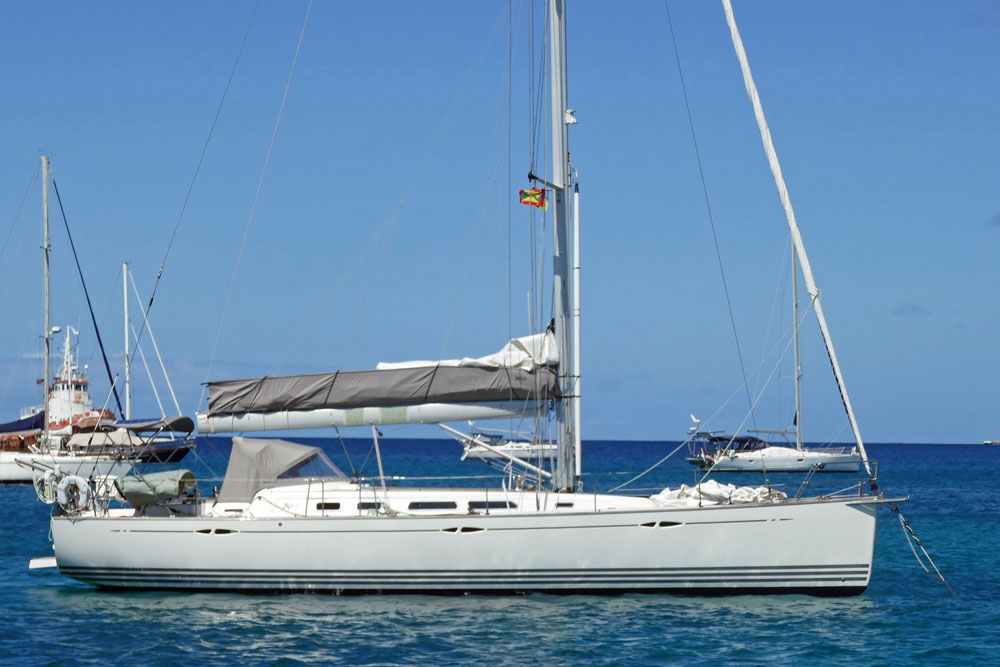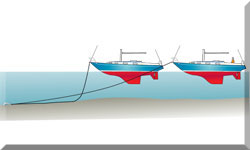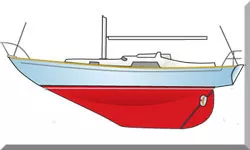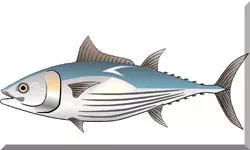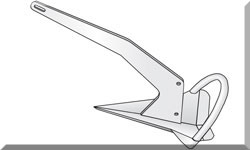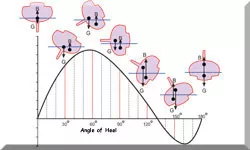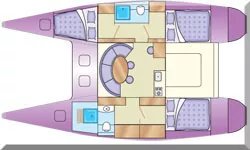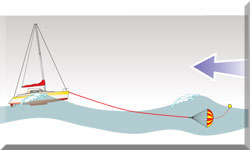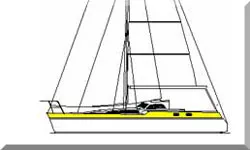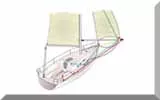- Home
- Cruising Boats
- Performance Cruising
Performance Cruising: The Right Boat in the Right Hands
I once heard performance cruising described as 'ordinary cruising with attitude'. I knew what he meant, but it might also be described as 'cruising with the emphasis on fast, efficient sailing'.
'Fast' though, is a relative term, but I think it's fair to say that all seasoned cruisers try to get the best out of their boats, be they aboard a heavy-displacement plodder or a light-displacement flyer.
But most of us sail our boats with more than a nodding regard for crew comfort when the conditions become lively. We're inclined to put a reef in well before the boat demands it, willingly sacrificing some speed for creature comfort.
On the other hand, the performance cruiser is more likely to keep driving the boat hard towards its destination, intent on maximising hull speed until its clearly no longer appropriate to do so. His (or her) attention to sail trim will approach devout.
Such cruising sailors are unlikely to favour heavy displacement, long-keeled boats for cruising.
Their preference will be for moderate-to-light displacement fin-keeled craft, with slippery easily-driven hulls. And a fixed prop would soon be replaced by one of the feathering or folding varieties.
Whilst it's true that many modern mass-produced light displacement sailboats look the part, their lightness may well be the result of a desire to reduce build costs rather than to optimise durability and performance. You might want to think twice about driving them hard to weather in challenging conditions.
Sailboats for Performance Cruising
But there are plenty of sailboats that can rightly be described as true performance cruising boats. Designed with fast easily-driven hulls, efficient sail plans and built with high-tech, lightweight materials for strength and robustness, these boats are fit for purpose.
Boats of this type have much in common with racing machines but are optimised for cruising, and often by a crew of just two people. The main cruising concessions are:-
- their draft will be much reduced from that of a deep-keeled race boat, in the interests of anchoring practicality;
- As a consequence, the mast height will be reduced to maintain the righting moment;
- They will be fully fitted out below and equipped with accessories for easy sail handling and comfortable living aboard.
In the right hands they're capable of impressive passage times and can take advantage of a weather window that would be marginal at best for an 'ordinary' cruising boat.
The following are four such boats...
Of course there are many more, but these are those that shared a Caribbean anchorage with our boat Alacazam during the 2017 sailing season and fell victim to my camera.
Clicking on the pics will reveal the specifications of each boat. Note their long waterlines, relatively high sail-area/displacement ratios and low displacement/length ratios—a clear indication of their performance capability.
These four boats are all sloops, but the Outbound 46 and the Aerodyne 47 are solent rigged, not cutters as they might appear to be at first glance.
I have to say that I found the Aerodyne 47 particularly mouthwatering...
Performance Cruising Catamarans
Many production catamarans, particularly those intended for chartering or family cruising, do not perform as well as you may expect them to. The reasons include:
- a low bridgedeck, which maximises headroom below but prevents the unobstructed flow of water between the hulls;
- high windage, resulting from flying bridges and sheer accommodation-providing bulkiness;
- overloading, through maximising the number of revenue-earning berths.
Of course, there are exceptions:
 Light, Simple & Quick—The Gunboat 62 High Performance Catamaran
Light, Simple & Quick—The Gunboat 62 High Performance Catamaran
High Performance Sails
Clearly there's little point in having a high-performance hull if the sails that drive it provide anything less than their maximum power and efficiency.
Nothing is more performance-sapping than a stretched, baggy sail. Sails in this condition:
- are impossible to trim effectively;
- cause the boat to heel more than they otherwise would;
- provide reduced drive;
- contribute to excessive leeway.
Performance sailboats deserve the robustness and durability of molded or laminate sails, which will retain their shape for the lifetime of the sail.
In fact they'll delaminate and generally fall apart before losing their shape. This is exactly opposite to the way in which woven sails deteriorate, which stretch and lose their shape long before their construction becomes an issue.
Laminate & Molded Sails for Top Performance...
To summarise...
Key Characteristics of 'No-Compromise' Performance Cruising Boats
Performance cruising boats are designed to achieve both speed and comfort, striking a balance between racing capabilities and the amenities needed for longer voyages. Here are some key characteristics:
- Sleek Hull Design: Performance cruisers have streamlined hull shapes that reduce drag and allow for higher speeds. The designs often include features like a plumb bow and flat aft sections for better hydrodynamics.
- Lightweight Materials: These boats are built with advanced materials such as carbon fiber or other composites to reduce weight without compromising strength. This enhances speed and agility.
- Large Sail Area: Performance cruisers typically have larger sail areas with advanced sail designs (like laminate sails) to capture more wind and improve performance. This includes features like high-aspect ratio sails and furling systems for ease of handling.
- Efficient Rigging: The rigging is optimized for performance with features like taller masts, adjustable backstays, and running backstays. This allows for precise sail trim and control.
- Deep Keel: A deeper keel improves stability and upwind performance by providing better leverage against the force of the sails. This also helps with tracking in various sea conditions.
- Modern Electronics and Navigation: Advanced navigation systems, instruments, and autopilot technologies are often integrated to enhance performance and ease of sailing.
- Responsive Handling: The steering systems are designed for quick and responsive handling, often featuring large, balanced rudders and precise helm controls.
- Comfortable Yet Functional Interiors: While comfort is not the primary focus, performance cruisers still offer functional interiors with sufficient amenities. The layout is often optimized to be lightweight and practical, with essentials like a galley, comfortable berths, and compact storage.
- Water Ballast or Canting Keel: Some performance cruisers use water ballast tanks or canting keels to increase stability and improve speed without adding permanent weight.
- Performance Tracking: Integrated performance tracking systems and software can analyze sailing conditions and provide real-time feedback for optimizing sailing techniques.
The Upside of Performance Cruising
Performance cruising and the resulting fast passage times can offer several significant benefits, including:
- Increased Flexibility: Quicker travel between destinations means more flexibility in choosing when and where to sail, giving you more control over your itinerary.
- Safety: Faster sailing can help you avoid bad weather or navigate through challenging conditions more effectively, enhancing overall safety during your voyage.
- More Time to Explore: By reducing travel time, you can spend more time at your destinations. Whether it's exploring a new port, enjoying local culture, or relaxing at anchor, you get to maximize your time experiencing new places.
- Efficiency: For those with tight schedules, such as those needing to meet work commitments or other obligations, fast passage times ensure you can fit sailing trips into your busy life without compromising on the enjoyment.
- Personal Satisfaction: Many sailors find great satisfaction in the skill and challenge of sailing fast. It can be exhilarating to push your boat and yourself to achieve the best performance possible.
- Fuel Savings: If you have an auxiliary engine, sailing faster means you'll rely less on engine power, saving on fuel costs and reducing your carbon footprint.
Whether you're a thrill-seeker or simply want to make the most out of your time on the water, faster passage times can be a rewarding aspect of performance cruising.
And the Downsides
But while performance cruising offers many benefits, there are some potential downsides to consider:
- Comfort Trade-Offs: Performance cruisers often prioritize speed over comfort. This can mean less spacious cabins, reduced storage, and fewer amenities compared to leisurely cruisers. The focus is on lightweight materials and sleek designs, which might not be as comfortable for long-term living.
- Higher Costs: The advanced materials, technology, and equipment required for performance cruising can be more expensive. Maintenance and repairs may also be costlier due to the specialized nature of performance boats.
- Complex Handling: Performance cruisers can be more challenging to sail, especially for beginners. They often require more skill, experience, and attention to detail to handle efficiently and safely, particularly in varying wind and sea conditions.
- Increased Wear and Tear: Sailing at higher speeds and pushing the boat to its limits can lead to increased wear and tear on the vessel. This may result in more frequent maintenance and potential breakdowns.
- Less Relaxation: The focus on speed and performance might take away from the leisurely and relaxing aspect of sailing. The need for constant adjustments and optimizations can make it a more intense experience, which may not be as enjoyable for those looking to unwind.
- Limited Crew Size: Performance cruisers may have less space for crew and passengers, which can limit the number of people you can bring on board comfortably.
Ultimately, the choice between performance cruising and leisurely cruising depends on your preferences and what you value most in your sailing experience.
Recent Articles
-
Multihull Autopilot Selection is Not Straightforward
Apr 19, 25 01:25 PM
Whether its for a catamaran or a trimaran, tiller or wheel steered, a multi hull autopilot must be endowed with specific performance characteristics... -
Wheel-Steering Autopilots: Your Questions Answered...
Apr 18, 25 03:45 PM
Whatever your question, you should find the answer here -
Tiller Pilots: Your Questions Answered...
Apr 18, 25 08:18 AM
Got a question about sailboat tiller pilots? Odds are, you'll find the answer here
